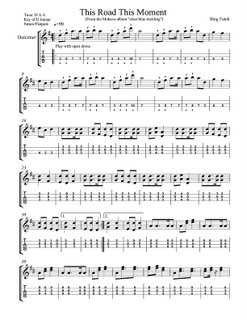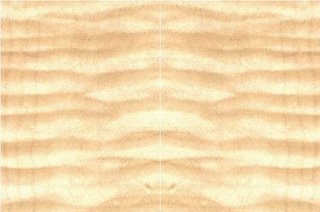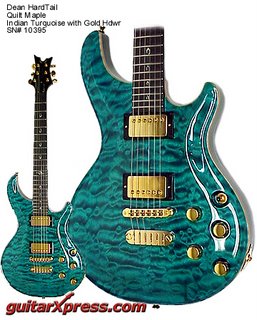
For the longest time, I just could NOT get this piece of sheet music printed out. It's been finished for a while, but there was some kind of error that was proving to be impossible - until today. So, here is another original tune ready for download in .pdf format:
This Road This Moment (.pdf)
This is the music for the final track on clear blue trickling. Right now, I've been notating the music into Sibelius and then exporting it to graphic form, dumping it into Adobe InDesign and then exporting it as a .pdf file. When it works. It's quite a process and I know there are easier ways - I'm just not sure what they are, besides TablEdit - which I'm working on getting. I'm pretty sure that the version that actually saves is a donation of some sort, and funds are kind of tied up and precious currently. So, what I've got to use is free - and that works for the time being, right?
 EBow ROCKS!
EBow ROCKS!Wow, this thing is pretty nifty! Now granted, it's made for guitars, even down to the string-spacing, so I knew that applying it to a dulcimer was going to be tricky - but within a half-hour or so, I was getting the most incredible sounds, from soft, woodwind-type hoots to mad fiddling action ala Beethoven. It requires a very delicate touch, and it sure is taking some getting used to - but a whole new avenue of sound has just been opened up to me - and hopefully, by the time the Dulcitar arrives, I'll have it down enough to really leap in with both feet. I'll upload some sound samples as soon as I've got something cool put together. Giddy fun! And speaking of the Dulcitar...
 Dulcitar Update
Dulcitar UpdateDoug writes that the veneer for the topside will be a little different, as you can see to the right, it's "a wide deep curl rather than a quilt. Bookmatched down the center- sweet!" He also reports that "As of today, The body is cut out, sanded and top is veneered..starting to look like a dulcitar! Meanwhile, control/pickup cavities need to be routed and 'handle' cut out. That will keep me busy for a day or two. Then Dolphy is carefully shaped and inlayed into top. After first sanding, sealer is hand painted onto Dolphy but not wood- to protect the pearl from being stained. Corner of back and sides will be rounded off with half round bit, sanded and sprayed. The top/sides use a smaller bit and will have to wait until after staining and application of color- black for the back, turquoise for the top. Top and back are colored and sealed for protection from the router base from scratching the top. The results are a nice clean line all around needing little or no touchup. The final finish coats are then applied."
"Dolphy" refers to the mother-of-pearl dolphin that he's going to inlay into the top for me. This is truly going to be a one-of-a-kind instrument!
 What really made my eyes pop is his description of how he's going to get the effect that's pictured here on this guitar. "To bring out the contrast in the grain, I will first stain the wood after light sanding using my finger tips, leaving the ripples. The a coat of sealer is then applied. Next the tops of the 'hills' are sanded off using a flat block, leaving the 'valleys' still sealed. Several more coats of stain are applied to the hills, making them darker than the valleys and so increasing the contrast. The pic below is what I'm shooting for... six parts emerald green to one part deep blue comes pretty close. Maybe a drop of yellow?"
What really made my eyes pop is his description of how he's going to get the effect that's pictured here on this guitar. "To bring out the contrast in the grain, I will first stain the wood after light sanding using my finger tips, leaving the ripples. The a coat of sealer is then applied. Next the tops of the 'hills' are sanded off using a flat block, leaving the 'valleys' still sealed. Several more coats of stain are applied to the hills, making them darker than the valleys and so increasing the contrast. The pic below is what I'm shooting for... six parts emerald green to one part deep blue comes pretty close. Maybe a drop of yellow?"She's gonna be one dreamy-looking axe!

No comments:
Post a Comment